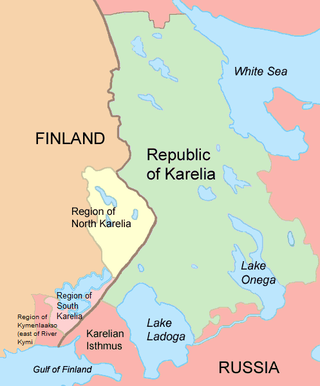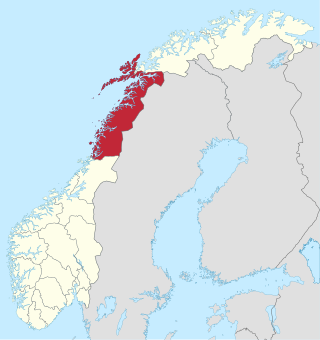Related Research Articles

Harald Fairhair was a Norwegian king. According to traditions current in Norway and Iceland in the eleventh and twelfth centuries, he reigned from c. 872 to 930 and was the first King of Norway. Supposedly, two of his sons, Eric Bloodaxe and Haakon the Good, succeeded Harald to become kings after his death.

Østfold is a county in Eastern Norway, which from 1 January 2020 to 31 December 2023 was part of Viken. Østfold borders Akershus and southwestern Sweden, while Buskerud and Vestfold are on the other side of Oslofjord. The county's administrative seat is Sarpsborg. The county controversially became part of the newly established Viken County on 1 January 2020. On 1 January 2024, Østfold was re-established as an independent county, however without the former municipality of Rømskog, which was amalgamated with the Akershus municipality Aurskog-Høland in 2020.

Halden, between 1665 and 1928 known as Fredrikshald, is both a town and a municipality in Østfold county, Norway. The municipality borders Sarpsborg to the northwest, Rakkestad to the north and Aremark to the east, as well as the Swedish municipalities Strömstad, Tanum and Dals-Ed respectively to the southwest, south and southeast.

Trøndelag (Urban East Norwegian:[ˈtrœ̂ndəˌlɑːɡ]; or Trööndelage is a county and coextensive with the Trøndelag region in the central part of Norway. It was created in 1687, then named Trondhjem County ; in 1804 the county was split into Nord-Trøndelag and Sør-Trøndelag by the King of Denmark-Norway, and the counties were reunited in 2018 after a vote of the two counties in 2016.

The Birkebein Party or Birkebeinar was the name for a rebellious party in Norway, formed in 1174 around the pretender to the Norwegian throne, Eystein Meyla. The name has its origins in propaganda from the established party that the rebels were so poor that they made their shoes of birch bark. Although originally a pejorative, the opposition adopted the Birkebeiner name for themselves, and continued using it after they came to power in 1184.

The history of Jews in Norway dates back to the 1400s. Although there were very likely Jewish merchants, sailors and others who entered Norway during the Middle Ages, no efforts were made to establish a Jewish community. Through the early modern period, Norway, still devastated by the Black Death, was ruled by Denmark from 1536 to 1814 and then by Sweden until 1905. In 1687, Christian V rescinded all Jewish privileges, specifically banning Jews from Norway, except with a special dispensation. Jews found in the kingdom were jailed and expelled, and this ban persisted until 1851.

The Fairhair dynasty was a family of kings founded by Harald I of Norway which united and ruled Norway with few interruptions from the latter half of the 9th century. In the traditional view, this lasted until 1387, however, many modern scholars view this rule as lasting only three generations, ending with Harald Greycloak in the late 10th century. The moniker "Fairhair dynasty" is a retrospective construction: in their lifetime what little traces there are refer to them consistently as "Ynglings".
The Jewish Children's Home in Oslo was established in 1939 under the auspices of Nansenhjelpen, the Nansen Aid, a humanitarian organization established in 1936 by Odd Nansen, the son of Nobel Peace Prize laureate Fridtjof Nansen. It was intended as a safe haven for Jewish children during the Holocaust, yet all of the children eventually had to flee to avoid deportation when Norway itself was occupied by Nazi Germany during World War II.

Prior to the deportation of individuals of Jewish background to the concentration camps there were at least 2,173 Jews in Norway. During the Nazi occupation of Norway 772 of these were arrested, detained, and/or deported, most of them sent to Auschwitz or other extermination camps where 742 were murdered. 23 died as a result of extrajudicial execution, murder, and suicide during the war. Between 28 and 34 of those deported survived their continued imprisonment. The Norwegian police and German authorities kept records of these victims, and so, researchers were able to compile information about the deportees.
The Royal Norwegian Society of Sciences and Letters is a Norwegian learned society based in Trondheim. It was founded in 1760 and is Norway's oldest scientific and scholarly institution. The society's Protector is King Harald V of Norway. Its membership consists of no more than 435 members elected for life among the country's most prominent scholars and scientists.

Statspolitiet was from 1941 to 1945 a National Socialist armed police force that consisted of Norwegian officials after Nazi German pattern. It operated independently of the ordinary Norwegian police. The force was established on 1 June 1941 during the German occupation of Norway. The initiative for the force came from the later chief Karl Marthinsen and other prominent members of the collaborationist party Nasjonal Samling. At its peak, in 1944 there were 350 employees in Statspolitiet, in addition to a larger number who collaborated or rendered services for them.

A border guide was a person that helped refugees from Norway escape over the Norway–Sweden border during the Second World War. There were probably over a thousand Norwegian border guides active during the Second World War. Men, women, and children served as border guides and assisted in guiding a total of 40,000 refugees to safety across the border in neutral Sweden.

The Jew clause is in the vernacular name of the second paragraph of the Constitution of Norway from 1814 to 1851 and from 1942 to 1945. The clause, in its original form, banned Jews from entering Norway, and also forbade Jesuits and monastic orders. An exception was made for so-called Portuguese Jews. The penultimate sentence of the same paragraph is known as the Jesuit clause.

The 12th Man is a 2017 Norwegian historical drama film directed by Harald Zwart, starring Thomas Gullestad as Jan Baalsrud, who escapes from occupying Nazi Germans on the island of Rebbenesøya, via the Lyngen Fjord and Manndalen, to neutral Sweden in the spring of 1943. The film, based on historical events of Operation Martin and the escape of Jan Baalsrud, adapted from the book Jan Baalsrud and Those Who Saved Him (2001) by Tore Haug and Astrid Karlsen Scott.
The 2019 Norwegian Football Cup was the 114th season of the Norwegian annual knock-out football tournament. It began with qualification matches in March and April 2019. The first round was played on 1 May 2019 and the tournament concluded with the final on 8 December 2019.
Growth of the Soil is a Norwegian silent film from 1921 based on Knut Hamsun's novel Growth of the Soil. The Danish filmmaker Gunnar Sommerfeldt wrote the screenplay and directed the film, and he also played the role of the bailiff Geissler in the film. Sommerfeldt invested DKK 240,00 in the film, which was a considerable sum in 1921.
Over grensen or Feldmann-saken is a Norwegian drama film that premiered on February 19, 1987. Bjørn Sundquist won the Amanda Award for the best male lead for his performance in the film.

Kaprolat, together with the nearby position "Hasselmann", were German names for positions, each on its own hill, in East Karelia on the Russian side of the border during World War II. The positions were located west of the small Karelian town of Louhi. In a Soviet offensive in June 1944, around 120 Norwegian fighters were killed and 23 died in Soviet captivity. This loss, a total of around 143, is the largest loss that has affected a Norwegian combat unit ever.

Nordland is one of the 19 multi-member constituencies of the Storting, the national legislature of Norway. The constituency was established in 1921 following the introduction of proportional representation for elections to the Storting. It is conterminous with the county of Nordland. The constituency currently elects eight of the 169 members of the Storting using the open party-list proportional representation electoral system. At the 2021 parliamentary election it had 182,075 registered electors.

Hurum Church is a medieval stone church in Hurum, Norway. It was constructed in the 12th century. The church was damaged by fire in 1686, and rebuilt with a baroque interior. Next to the church, the Huitfeldt-family built a wooden funeral chapel in the second half of the 17th century. A new stone chapel was built in 1750, and contains the remains of the naval commander Iver Huitfeldt.
References
- ↑ "Eirik Veum - En nådeløs nordmann? Tanker om Eirik Veums bok "Nådeløse nordmenn"". www.nsbarn.no. Retrieved 2 February 2023.
- ↑ Ulstein, Ragnar (2006) [1995]. Jødar på flukt (in Norwegian Nynorsk) (2nd ed.). Oslo: Samlaget. pp. 84–116. ISBN 978-82-521-6988-1.
- ↑ Helgheim, Roald (2003-11-22). "Prisen på ein jøde" (in Norwegian Nynorsk). Dag og Tid. Retrieved 2008-02-05.
- ↑ Olson, Ted (1953-05-01). "Death at Skrikerud Pond". Harper's. Retrieved 2008-02-05.
- ↑ Espen, Søbye (2007-10-10). "Ruth Maier vart ofra" (in Norwegian Nynorsk). Dag og Tid. Retrieved 2008-02-05.
- ↑ "Feldmann saken (1987)". IMDb. Retrieved 8 November 2020.
- ↑ Senje, Sigurd (1987). Ekko fra Skrikktjenn (in Norwegian). Oslo: Pax. ISBN 82-530-1401-5.